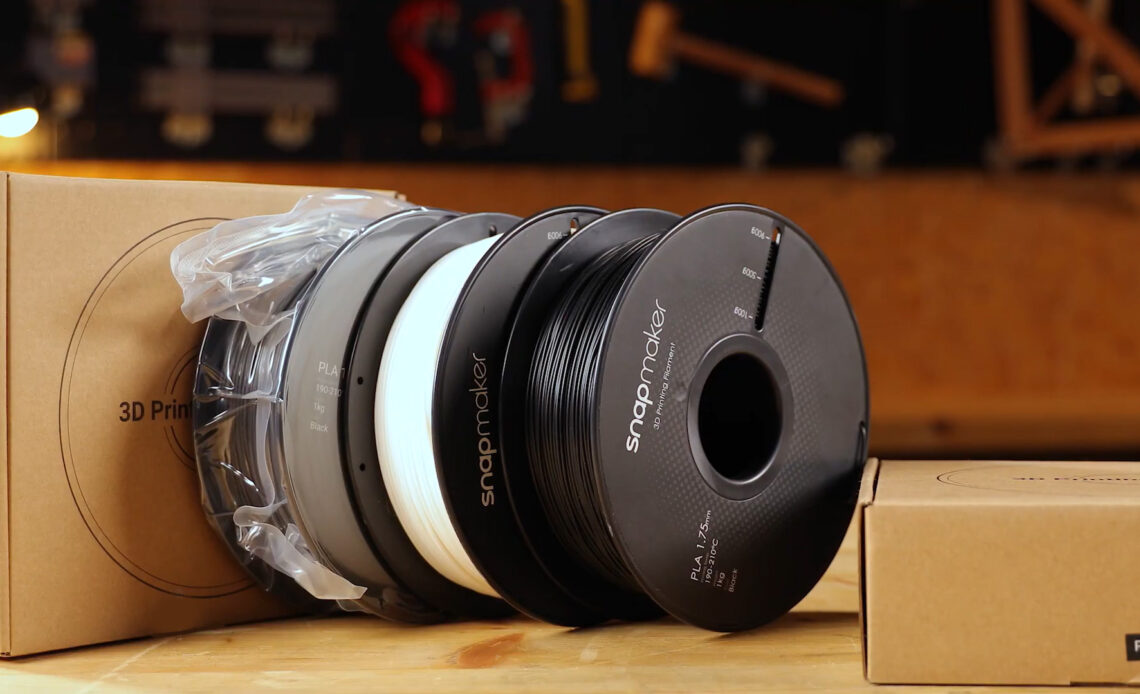Embarking on the exciting journey of Fused Deposition Modeling (FDM) 3D printing often comes with a learning curve. Even experienced users encounter occasional hiccups. The good news is that many common 3D printing problems have well-understood causes and relatively straightforward solutions. This guide will walk you through some of the most frequent FDM printing issues and provide practical steps to get your prints back on track, often related to the quality and handling of your 3D printer filament.
The Frustration of Stringing: Those Pesky Plastic Hairs
Stringing, also known as oozing or whiskers, refers to the thin strands of plastic that appear between different parts of your print or when the nozzle moves across an open space. This can mar the appearance of your finished object. Several factors can contribute to stringing. One common cause is incorrect retraction settings. Retraction is when the extruder pulls the filament back slightly when it’s not actively printing to prevent oozing. Try increasing the retraction distance or speed in your slicer software. Another culprit can be the nozzle temperature being too high, causing the filament to become too liquid and drip. Experiment with slightly lower nozzle temperatures. Additionally, increasing the travel speed of the nozzle can minimize the time it has to ooze. Finally, moisture absorbed by your 3D printer filament can also contribute to stringing. If you suspect this, try drying your filament.
Warping Woes: When Prints Lift Off
Warping is a frustrating issue where the corners or edges of your print lift off the build platform during printing. This often occurs with filaments that have a higher shrinkage rate as they cool, such as ABS. Inadequate bed adhesion is a primary cause. Ensure your build platform is properly leveled. Using bed adhesion aids like a glue stick, hairspray, or specialized build plate surfaces can significantly improve adhesion. For larger prints or filaments prone to warping, using a brim (a single-layer outline around the base of your print) or a raft (a disposable platform printed beneath your object) can provide a larger contact area and better grip. An uneven bed temperature can also cause warping; if your printer has a heated bed, make sure the temperature is consistent across the surface. Lastly, drafts and fluctuations in ambient temperature can exacerbate warping, so consider printing in a more stable environment or using an enclosure for your 3D printer.
Layer Adhesion Issues: Prints Falling Apart
Weak prints that easily delaminate or split between layers indicate a problem with layer adhesion. This means the extruded lines of 3D printer filament are not properly bonding to the layer below. One common cause is an incorrect nozzle temperature. If the nozzle isn’t hot enough, the extruded plastic won’t melt sufficiently to fuse with the previous layer. Try increasing the nozzle temperature in small increments. Insufficient extrusion, where not enough material is being laid down, can also lead to poor layer adhesion. Increasing the extrusion multiplier (also known as flow rate) in your slicer might help. A layer height that is too large for your nozzle size can also hinder proper bonding. Try reducing the layer height. Finally, a dirty or partially clogged nozzle can restrict filament flow and cause adhesion issues. Regularly cleaning your nozzle is essential for consistent print quality.
The Dreaded Clog: When Filament Refuses to Flow
A clogged nozzle is a common headache for FDM printer users, where the 3D printer filament gets stuck in the hot end, preventing extrusion. Several factors can lead to clogs. Debris or dust on the filament can get lodged in the nozzle. Using a filament filter can help prevent this. Incorrect temperature settings can also cause clogs, either by not melting the filament sufficiently or by overheating it and causing it to degrade and solidify. Ensure you are using the recommended temperature range for your specific filament. Filament swelling due to moisture absorption can also cause it to get stuck in the narrow passages of the hot end. Proper filament storage is key. Another common cause is heat creep, where heat travels up the hot end, causing the filament to soften and jam before it reaches the melting zone. Ensuring proper cooling of the heat sink above the hot end can help prevent this. When you encounter a clog, try performing a “cold pull” or using specialized nozzle cleaning tools.
Elephant’s Foot: The Widening Base
The “elephant’s foot” effect describes a phenomenon where the bottom layers of your print are noticeably wider than the rest. This is often caused by the build plate being too close to the nozzle during the initial layer. The squished plastic then spreads outwards. Adjusting the Z-offset (the distance between the nozzle and the build plate) slightly upwards can resolve this issue. Another potential cause is an excessive initial layer flow rate; reducing this setting in your slicer might also help.
General Troubleshooting Tips for FDM Printing
Troubleshooting 3D printing problems often involves a process of elimination. Start by making small adjustments to your settings and testing the results. It’s generally best to change only one setting at a time so you can clearly identify the impact of that change. Regularly cleaning your printer, including the nozzle and build platform, is crucial for preventing many common issues. Finally, don’t hesitate to consult online communities, forums, and resources specific to your printer model or filament type. The 3D printing community is vast and often offers valuable insights and solutions to common problems.
Conclusion
While encountering printing problems can be frustrating, remember that troubleshooting is a natural part of the FDM 3D printing experience. By understanding the common issues, their causes, and the corresponding solutions, you’ll be well-equipped to overcome challenges and consistently produce high-quality prints. Don’t be afraid to experiment and learn from each experience – with a little persistence, you’ll be mastering your FDM 3D printer in no time.

